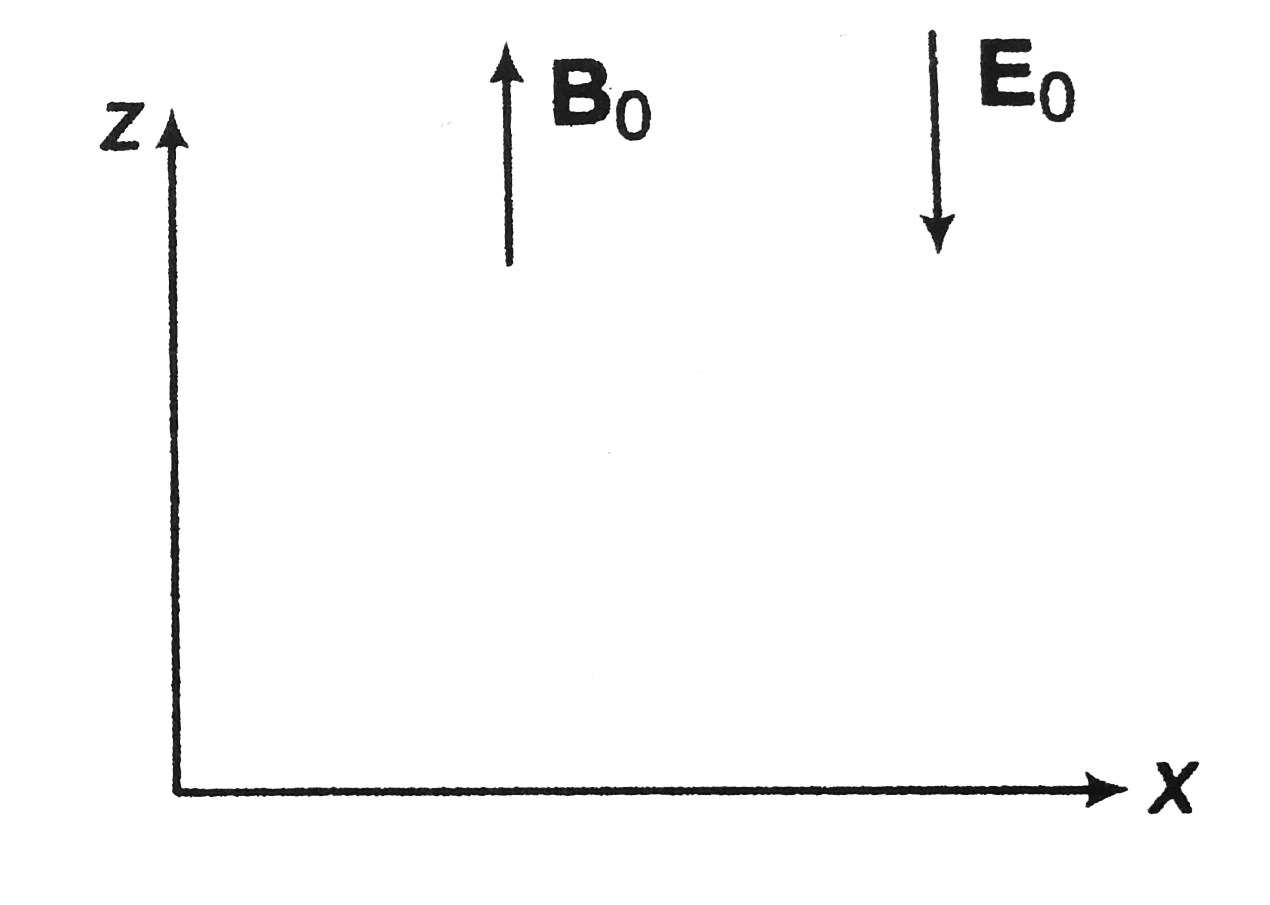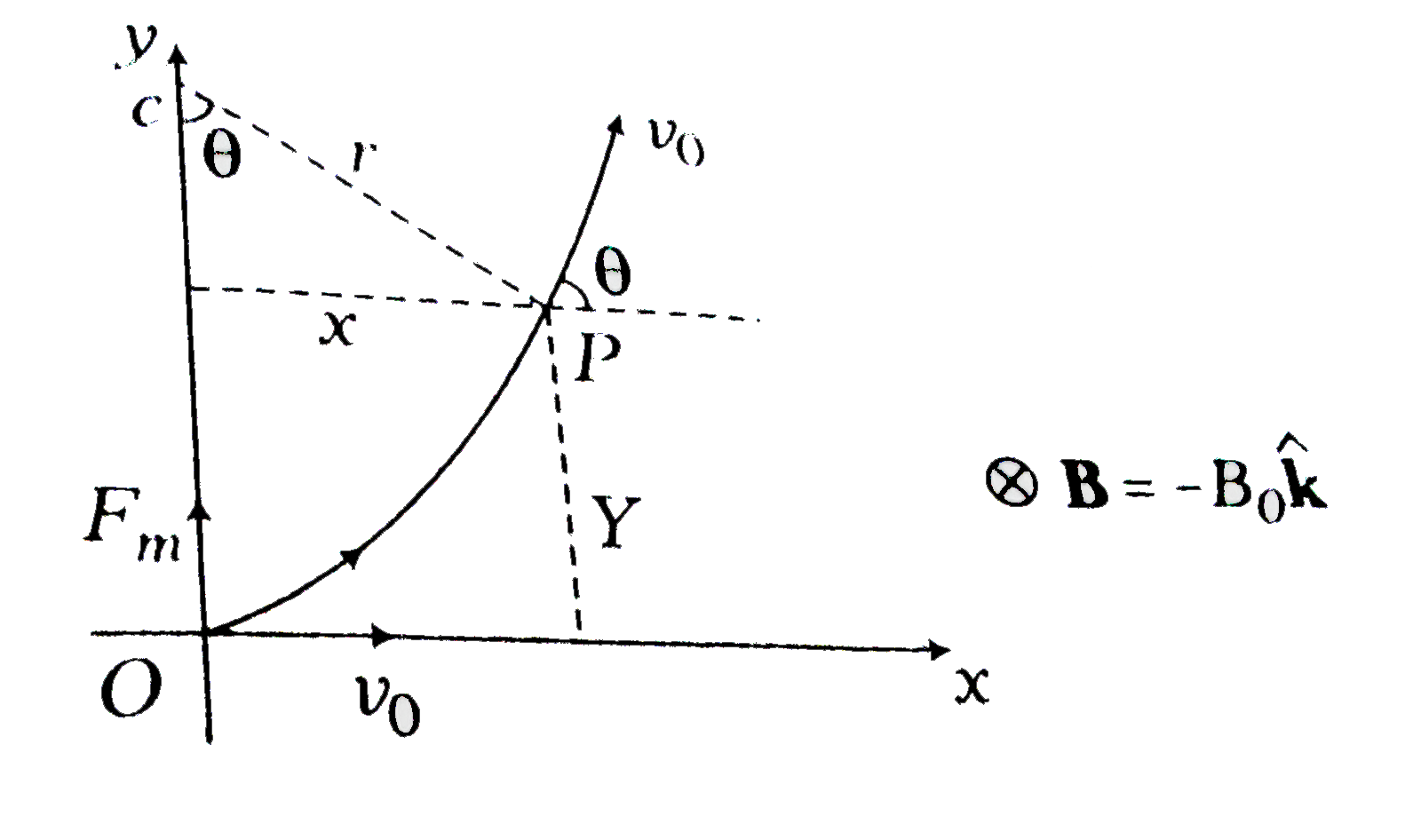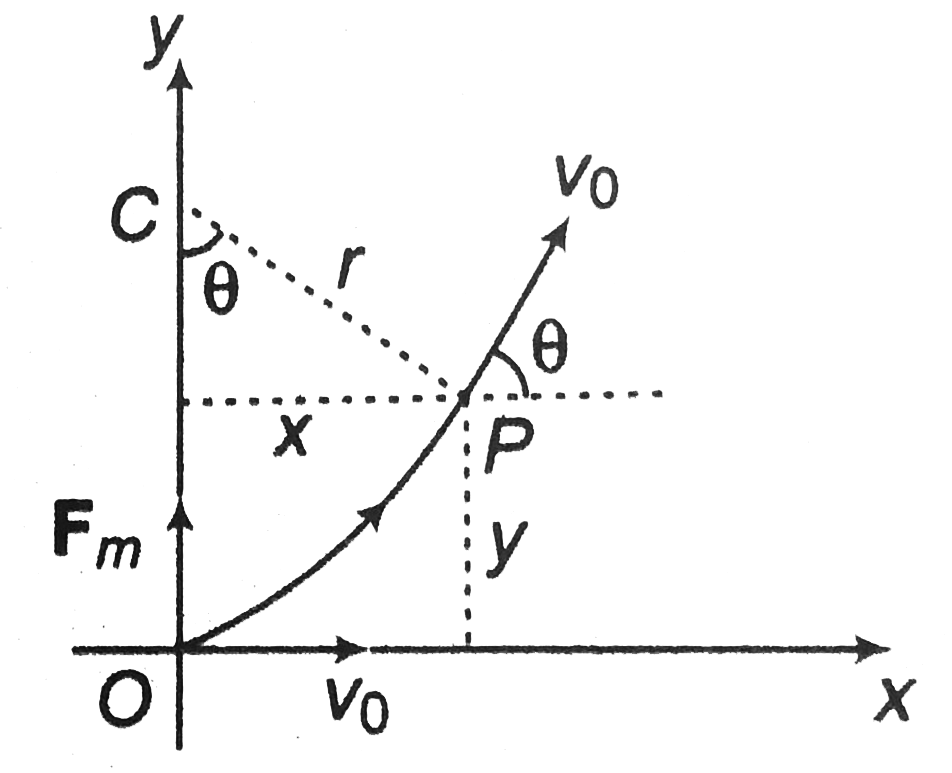Consider the motion of a positive point charge in a region where there are simultaneous uniform eletric and magnetic field E=E0ˆj and B=B0ˆj. At time t=0, this charge has velocity v in the x-y-plane making an angle θ with the x-axis. Which of the following option(s) is (are) correct for time t>0?
a. If θ=00 the charge moves in a circular path in the xy-plane.
b.Ifθ=00 the charge undergoes helical motion with constant pitch along the y-axis.
c. If θ=100 the charge undergoes helicalmotion with its pitch increasing with time along the y-axis.
d. If θ=90∘ the charge undergoes linear but accelerated motion along the y-axis.
a.If θ=00 the charge moves in a circular path in the xy-plane.
b. If theta=0^0 the charge undergoes helical motion with constant pitch along the y-axis.
c.
If θ=100 the charge undergoes helicalmotion with its pitch increasing with time along the y-axis.
d. If θ=90∘ the charge undergoes linear but accelerated motion along the y-axis.
To solve the problem, we need to analyze the motion of a positive point charge in the presence of uniform electric and magnetic fields. The electric field E=E0^j and the magnetic field B=B0^j are both directed along the y-axis. The charge has an initial velocity v in the x-y-plane, making an angle θ with the x-axis.
Let's analyze each case step by step:
Step 1: Understanding the Forces Acting on the Charge
The force acting on the charge due to the electric field is given by:
FE=qE=qE0^j
The magnetic force acting on the charge is given by:
FB=qv×B
Since B is in the y-direction, we need to consider the components of v in the x-y plane.
Step 2: Analyzing the Cases
Case a: θ=0∘
When θ=0∘, the velocity v is entirely in the x-direction:
v=v^i
The magnetic force becomes:
FB=q(v^i)×(B0^j)=qvB0^k
The net force acting on the charge is:
Fnet=FE+FB=qE0^j+qvB0^k
This indicates that the charge will move in a circular path in the x-z plane, not the x-y plane. Thus, option a is incorrect.
Case b: θ=0∘
As derived above, the charge does not undergo helical motion; it moves in a circular path in the x-z plane. Thus, option b is incorrect.
Case c: θ=10∘
When θ=10∘, the velocity components are:
vx=vcos(10∘),vy=vsin(10∘)
The magnetic force will still act perpendicular to the velocity in the x-z plane, and the electric force acts in the y-direction. The charge will undergo helical motion, and the pitch will increase due to the constant upward acceleration from the electric field. Thus, option c is correct.
Case d: θ=90∘
When θ=90∘, the velocity is entirely in the y-direction:
v=v^j
In this case, the magnetic force is zero because v and B are parallel:
FB=q(v^j)×(B0^j)=0
The only force acting on the charge is the electric force, leading to linear motion in the y-direction. Thus, option d is correct.
Final Conclusion
The correct options are:
- Option c: If θ=10∘, the charge undergoes helical motion with its pitch increasing with time along the y-axis.
- Option d: If θ=90∘, the charge undergoes linear but accelerated motion along the y-axis.
The force acting on the charge due to the electric field is given by:
FE=qE=qE0^j
The magnetic force acting on the charge is given by:
FB=qv×B
Since B is in the y-direction, we need to consider the components of v in the x-y plane.
When θ=0∘, the velocity v is entirely in the x-direction:
v=v^i
The magnetic force becomes:
FB=q(v^i)×(B0^j)=qvB0^k
The net force acting on the charge is:
Fnet=FE+FB=qE0^j+qvB0^k
This indicates that the charge will move in a circular path in the x-z plane, not the x-y plane. Thus, option a is incorrect.
As derived above, the charge does not undergo helical motion; it moves in a circular path in the x-z plane. Thus, option b is incorrect.
When θ=10∘, the velocity components are:
vx=vcos(10∘),vy=vsin(10∘)
The magnetic force will still act perpendicular to the velocity in the x-z plane, and the electric force acts in the y-direction. The charge will undergo helical motion, and the pitch will increase due to the constant upward acceleration from the electric field. Thus, option c is correct.
When θ=90∘, the velocity is entirely in the y-direction:
v=v^j
In this case, the magnetic force is zero because v and B are parallel:
FB=q(v^j)×(B0^j)=0
The only force acting on the charge is the electric force, leading to linear motion in the y-direction. Thus, option d is correct.
The correct options are:
- Option c: If θ=10∘, the charge undergoes helical motion with its pitch increasing with time along the y-axis.
- Option d: If θ=90∘, the charge undergoes linear but accelerated motion along the y-axis.
Topper's Solved these Questions
- BOOK - DC PANDEY ENGLISHCHAPTER - MAGNETICSEXERCISE - INTRODUCTORY EXERCISE1videos
MAGNETICS
- BOOK - DC PANDEY ENGLISHCHAPTER - MAGNETICSEXERCISE - SUBJECTIVE_TYPE1videos
MAGNETICS
- BOOK - DC PANDEY ENGLISHCHAPTER - MAGNETIC FIELD AND FORCESEXERCISE - Medical entrance s gallery59videos
MAGNETIC FIELD AND FORCES
- BOOK - DC PANDEY ENGLISHCHAPTER - MAGNETISM AND MATTEREXERCISE - Medical gallery1videos
MAGNETISM AND MATTER
Similar Questions
A charge particle is moving along positive y-axis in uniform electric and magnetic fields
E=E0ˆk
and B=B0ˆi
Here E0 and B0 are positive constants.choose the correct options.View SolutionA particle of mass m and charge q is lying at the origin in a uniform magnetic field B directed along x-axis. At time t = 0, it is given a velocity v0, at an angleθ with the y-axis in the xy-plane. Find the coordinates of the particle after one revolution.
View SolutionA proton moves at a constant velocity of 50ms along the x-axis, in uniform electric and magnetic fields. The magnetic field is B=(2.0mT)ˆj. What is the electric field?
View SolutionElectric field and magnetic field n a region of space is given by E=E0ˆj and B=B0ˆj. A particle of specific charge alpha is released from origin with velocity v=v0ˆi. Then path of particle
View SolutionA positively charged particle is moving along the positive x-axis in a unifom electric field→E=E0ˆj and magnetic field →B=B0ˆk (where E0 and B0 are positive constants), then
View SolutionIn a certain region, uniform electric field E=−E0ˆk and magnetic field B=B0ˆk are present. At time t=0, a particle of mass m and charge q is given a velocity v=vj+vk. Find the minimum speed of the particle and the time when it happens so.
 View Solution
View SolutionUniform electric field exists in a region and is given by →E=E0ˆi+E0ˆj. There are four points A(−a,0),B(0,−a),C(a,0),andD(0,a) in the xy plane. Which of the following is the correct relation for the electirc potential?
View SolutionA particle of spectfic charge α enters a uniform magnetic field B=−B0ˆk with velocity V=v0ˆi from the origin Find the time dependence of velocity and position of the particle

View SolutionA particle of specific charge alpha enters a uniform magnetic field B=−B0ˆk with velocity v=v0ˆi from the origin. Find the time dependence of velocity and position of the particle.
 View Solution
View SolutionA particle having mass m and charge q is released from the origin in a region in which ele field and magnetic field are given by B=−B0ˆjand E=E0ˆk.
Find the y- component of the velocity and the speed of the particle as a function of it z-coordinate.View Solution

